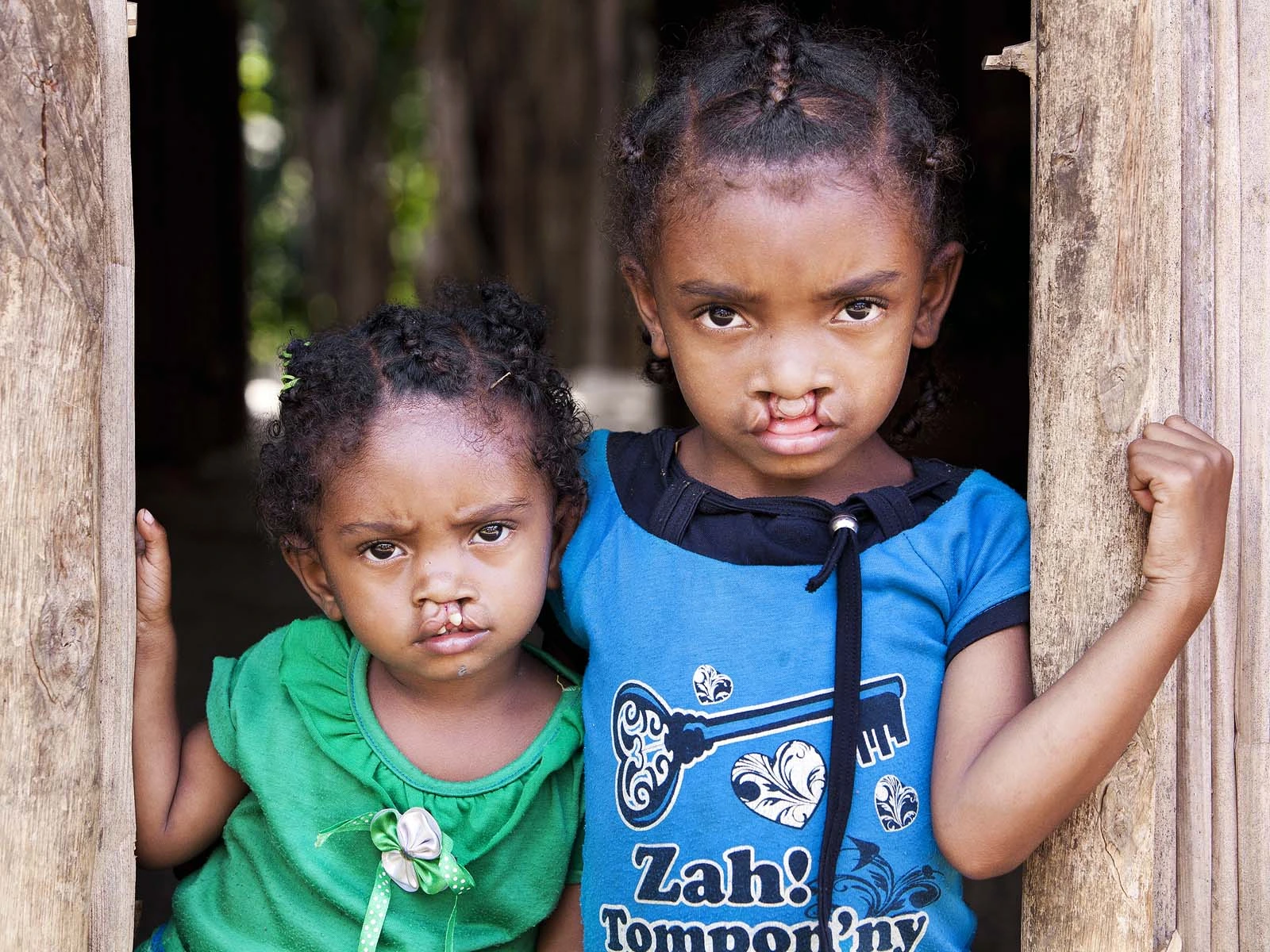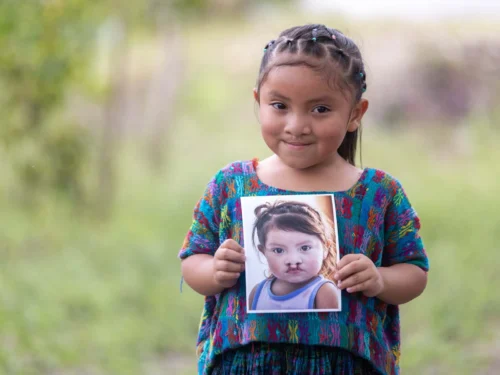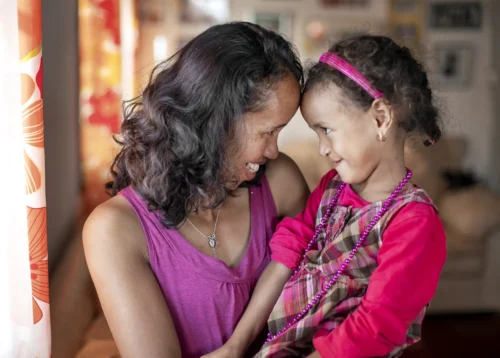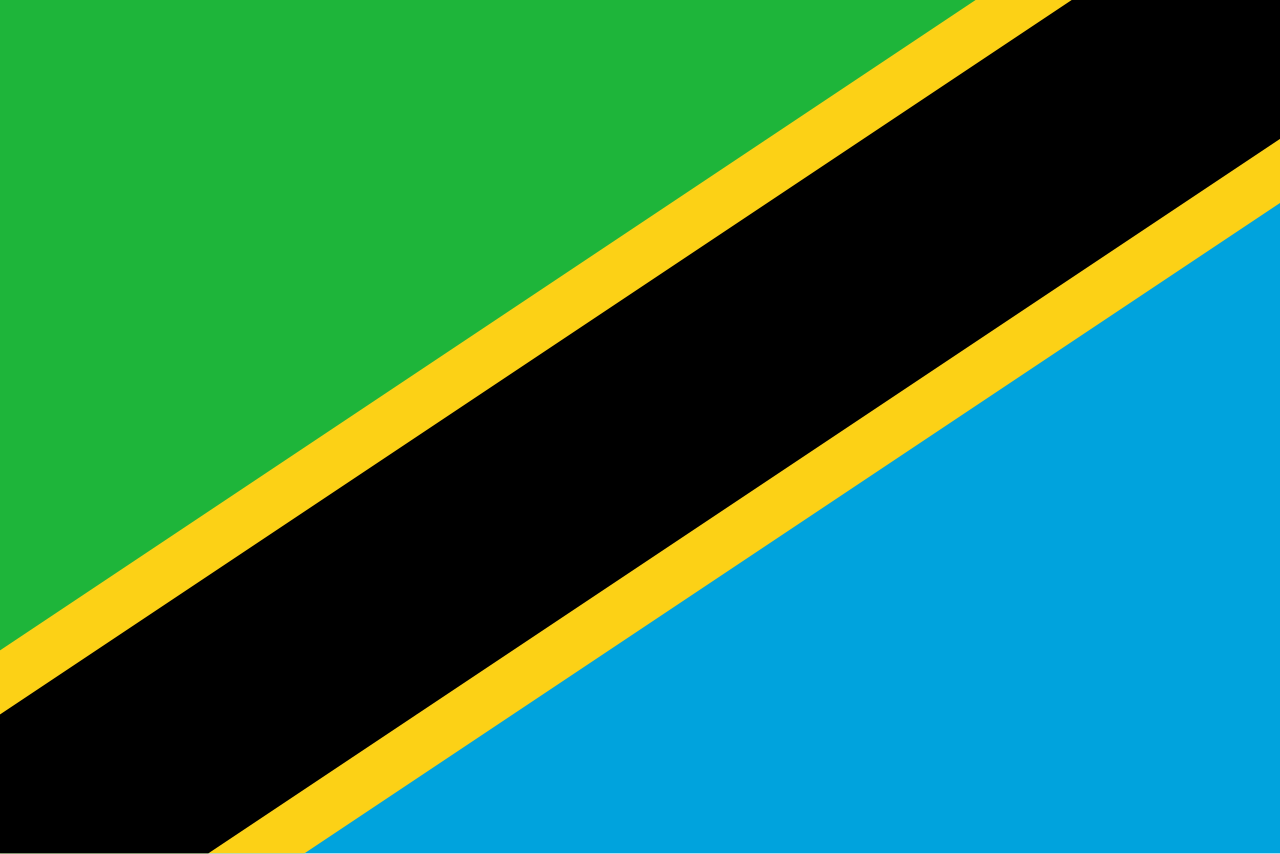From their quiet, palm-thatched village in rural Madagascar, the journey to healing spanned more than 275 kilometres. It took three hours on foot, a boat ride across a stream, auto rickshaws, and a crowded bus trip to a city they had never seen. But for Dest and Rosoa, and their daughters Vaviroa and Nambinina, this long, uncertain path was the only road to hope.
Vaviroa was born with a bilateral cleft lip—a shock to her parents, who had no family history of cleft conditions. Their grief deepened when their third daughter, Nambinina, was also born with a cleft lip. Living in an isolated community, with no phone service and hours from medical care, answers were hard to come by. Some neighbours believed cleft conditions were caused by hidden farm tools—an old superstition. Dest and Rosoa could only believe it was their destiny.
When Vaviroa was just six weeks old, her parents made a three-hour walk to the nearest hospital for her routine vaccinations. That was the first time they heard that surgery was possible. But it felt like an impossible dream. With no money and no way to make the 12-hour trip to the capital, the idea stayed painfully out of reach.
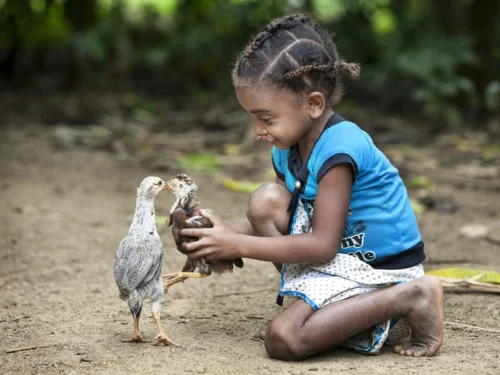
Years later, when a neighbour returned from a health meeting with news that Operation Smile was bringing a surgical program to Tamatave, the nearest major city, hope stirred once again. It would still be a difficult trip. But it was possible.
The very next day, Rosoa walked the three hours to the nearest hospital to register the girls. When she learned she needed to bring them in person, she returned again—this time with Dest, and both daughters in their arms.
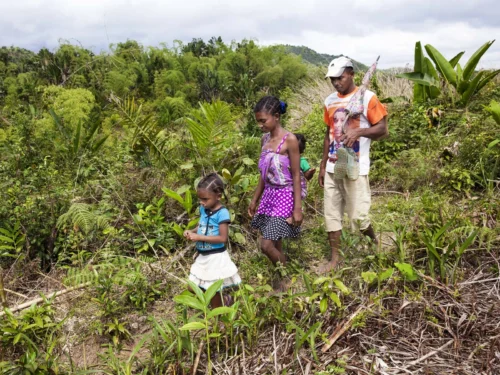
Their trek to the surgical program was long and challenging. They walked 8 kilometres to reach the road, crossed a stream by boat, rode for over an hour in an autorickshaw, and boarded a bus for three more hours. Neither parent had ever been to Tamatave. They were worried about finding the hospital, worried about what might happen. But they were determined to try.
With support from Operation Smile, their travel was covered. Both girls received full medical evaluations and were cleared for surgery. On the same day, their lives changed.
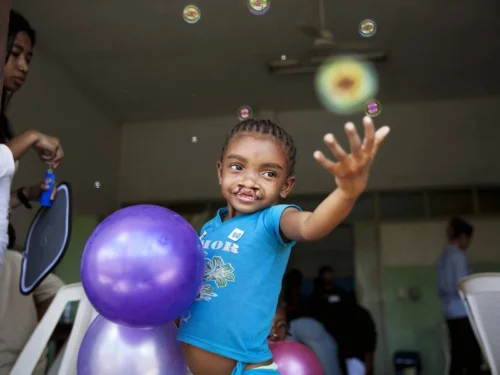
When the family returned home, Dest’s sister danced with joy. Neighbours who once thought cleft conditions couldn’t be repaired now believed. Another family who’s child was also born with a cleft lip made plans to travel to the next program.
For the first time, Vaviroa could go to school. She loves math and playing hopscotch with her friends. Before surgery, she had never held a crayon.
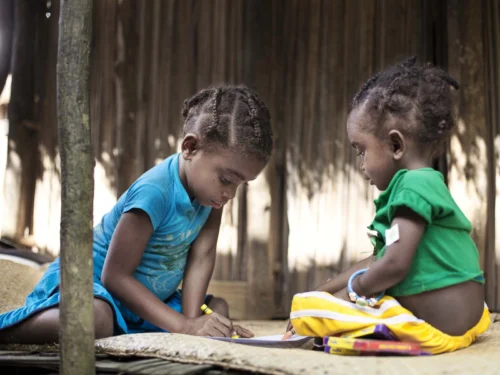
Her father, Dest, says that the most important thing is that both girls are healthy. But like many families, the journey to care tested everything they had.
Right now, 5 billion people around the world can’t access safe, timely surgical care. In under-resourced settings, 9 out of 10 people are unable to get even the most basic procedures. For families like Vaviroa’s, that means traveling for days, exhausting their savings, and still facing the risk of being turned away due to malnutrition, illness or other.
At Operation Smile, we know there’s a better way. That’s why we launched Operation 100—a bold new strategy to bring cleft surgery and care closer to where patients live. We’re investing in:
- 100 local hospitals in under-resourced communities.
- 100 surgical teams trained to provide safe, effective care.
- Equipment and tools to support timely, high-quality procedures.
- Recovery spaces where patients can heal with dignity.
Our vision is clear: a world where families like Vaviroa’s won’t have to walk for hours or travel for days just to reach care. A world where children can receive surgery within two hours of home—because when surgery is accessible, lives are changed, families stay strong and hope travels farther.
For Vaviroa and Nambinina, the journey was long. But it led to healing, belief, hope, and a future that now feels within reach.


